Photographs: Danish Siddiqui/Reuters. Sanjeev Sanyal
We need to change the way we think of slums and small towns - this is where the new middle class is being created, writes Sanjeev Sanyal.
At the heart of India's economic and cultural resurgence over the last two decades is an urban middle class that has had the confidence to take on the world.
This is not unique to India - from 19th century Britain to modern China, the self-reinforcing expansion of the middle class has been a key driver of growth. India has barely embarked on this journey.
However, the future is not an extrapolation of today's urban middle class but the creation of a brand-new social group with its own attitudes, affiliations and dynamics.
...
The new middle class will rise from slums
Image: Call centre executives.These are not the children of yesterday's middle class. Understanding this new group is key to understanding India's future.
...
The new middle class will rise from slums
Image: Shampa Pal, a potter, paints the Hindu goddess of wealth and prosperity Lakshmi.Photographs: Rupak De Chowdhuri/Reuters.
A proto-middle class existed in India prior to the British period, consisting of petty Mughal officials, shopkeepers, master craftsmen, priests and scribes. However, they were not a middle class in the modern sense.
They would not quite have imbibed the very middle-class value that one can use education and hard-work to better one's position.
There is a difference between respect for learning and seeing it as an agent for change.
From the middle of the 19th century, the mindset began to shift as the ideas of the Industrial Revolution began to seep into the major cities of British India.
...
The new middle class will rise from slums
Image: Social reformer Ram Mohan Roy.At the same time, the growing use of the English language provided access to technological, political and cultural innovations of the West.
Thus, the Indian middle class was born. By the early 20th century, it was influential enough to provide many of the key leaders of India's freedom movement. With Independence, the upper echelons of the existing middle class became the new elite.
Others gained from the expansion of public sector jobs in the 50s and early 60s. Some new blood may have been sucked in, but much of this growth was from the demographic growth of the existing middle class.
...
The new middle class will rise from slums
Image: Maruti 800 replaced scooters.Photographs: Reuters.
Its main impact was horizontal by re-allocating its employees to jobs that were away from their home provinces. Housing colonies had to be built to house IIT professors, SAIL engineers and so on.
The private sector too mimicked this general scheme.
In turn, it created a whole generation of middle-class children who grew up together in housing colonies and with a shared experience - Chitrahaar on Doordarshan, the Fiat or scooter that was replaced by the Maruti 800, and the unending sequence of exams. From the early 90s, they began to inter-marry.
...
The new middle class will rise from slums
Image: A policeman teaches children from slums.Photographs: Reuters.
Till now, the Indian middle class had been the sum of the Tamil middle class, Bengali middle class, Punjabi middle class and so on.
However, by the 90s, we had a social group whose members had more in common with each other than with those of their caste or province of origin.
When India liberalised its economy in the 90s, it was this group that benefited the most from the boom in white-collar jobs. Some of the members of the group even set up businesses and prospered.
Still, the middle class continued to be dominated by those whose parents and grandparents would have been recognisably middle class. This is now changing.
...
The new middle class will rise from slums
Image: People go to work in a Mumbai local train.Photographs: Reuters.
The Indian middle class is much smaller than casual media reports suggest.
My calculations suggest that, adjusted for purchasing power, this group is currently around 60-70 million by most international standards (far lass than the 300 million that is quoted in corporate boardrooms).
It is reasonable to expect, however, that it will grow very fast with the current trajectory of economic growth - perhaps by four times in the next 20 years. But, where will they all come from?
The new middle class will rise from slums
Image: Population rises.Their numbers are being depleted by prosperity (many have graduated to being upper class) and emigration (which middle-class family doesn't have someone abroad?). Even more importantly, there has been a very sharp decline in birth rates.
By the 80s, the average middle-class family had two kids. My guesstimate is that, today the average middle-class woman produces around 1.2 children.
This is half the level needed to keep a population stable. In other words, when the Indian middle class hits 250-300 million in 2030, barely a 10th of it will be drawn from the pre-existing pool. What does this mean?
...
The new middle class will rise from slums
Image: IIT-Bombay.The first implication is that we are entering an era of unprecedented upward mobility. We can see this in all arenas.
For instance, it was common for officers in the armed forces to be drawn from distinguished families, often with a military past.
Now we are witnessing large-scale intake from more modest backgrounds. The same can be said of the civil service.
Similarly, the average entrant to an IIT is no longer from institutions like St Xavier's and St Columba's only, but from even a coaching centre in Kota.
The new middle class will rise from slums
Image: Indian delegation at the Delhi Commonwealth Games.The parents of tomorrow's middle class work in our cities today as chauffeurs, janitors and shop assistants.
Like the parents of several medal-winners at the Delhi Commonwealth Games, they are systematically investing in their children's future. This is why they endure the indignity of a life in the slums.
As I have argued in my earlier Business Standard columns, this has important implications for urban policy.
We need to change the way we think of slums, small towns and public housing - this is where the new middle class is being created.
..
The new middle class will rise from slums
Image: A child working on his XO laptop.Photographs: Sanjay Sawant.
Most importantly, from a political perspective, this group will not have the old links of patronage that connected the elite with the old middle-class.
The recent Adarsh real-estate scam in Mumbai is a graphic example of this incestuous relationship. It is possible that the new entrants could begin to ask uncomfortable questions about corruption and nepotism.
Alternatively, it could take an approach that pays scant regard to the rules, further eroding the institutions of governance. Whatever it is, we can no longer ignore the new middle-India.
The writer is president, Sustainable Planet Institute and author of 'The Indian Renaissance: India's Rise After a Thousand Years of Decline'.

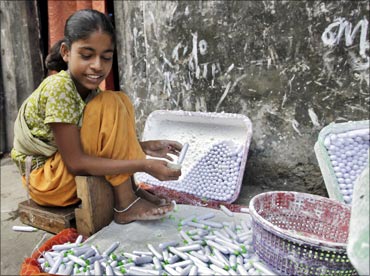
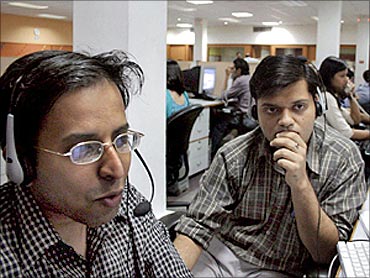
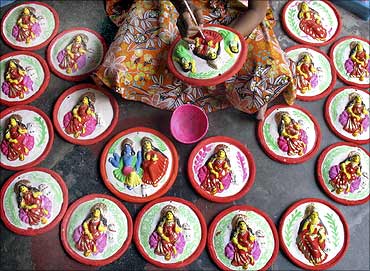



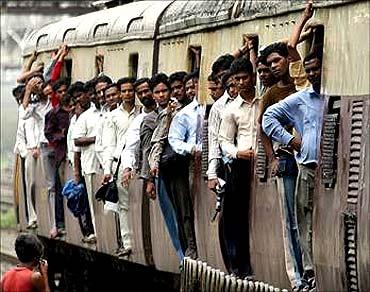
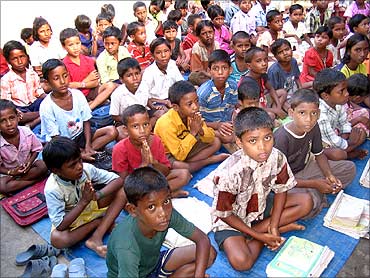
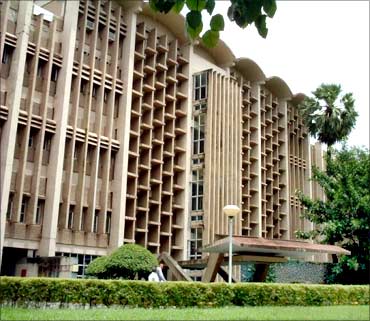

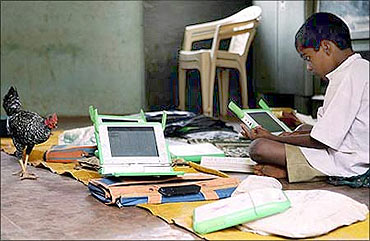
article